Indian Society & Social Justice - 2 | Current Affairs & Hindu Analysis: Daily, Weekly & Monthly - UPSC PDF Download
SC Strengthening Law Against Child Pornography in India
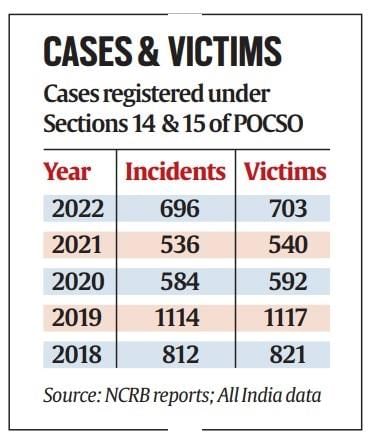 Why in News?
Why in News?
The Supreme Court of India has made a crucial advancement in the fight against child exploitation by reinforcing that the consumption of sexually explicit content involving minors is a serious criminal offence. This decision overturned a previous ruling by the Madras High Court, which had stated that passive consumption of child pornography did not constitute an offence under the Protection of Children from Sexual Offences (POCSO) Act or the Information Technology (IT) Act.
Key Takeaways
- The POCSO Act is India's first comprehensive law enacted in 2012 to combat sexual abuse against children.
- The Supreme Court has expanded the interpretation of the law to include passive consumption as an offence.
- Recommendations have been made to amend the POCSO Act to better reflect the nature of crimes against children.
Additional Details
- Protection of Children from Sexual Offences (POCSO) Act: This Act aims to protect children against sexual assault, harassment, and pornographic violations. It includes provisions for establishing special courts to expedite trials related to these offences.
- Concerns: There has been a rise in child abuse cases, particularly during the COVID-19 pandemic, indicating a growing need for awareness and legal action.
- SC’s Ruling on Section 15: The Supreme Court clarified that possession of child pornography is not limited to having physical copies; it can also include the potential to control or access such material.
- Recommendations: The SC urged the government to enhance victim support services and raise public awareness about child abuse and reporting mechanisms.
In summary, the Supreme Court's recent decision marks a significant step towards addressing child pornography in India, emphasizing the need for comprehensive legal frameworks and societal awareness to protect vulnerable children.
Recent Incident of Sexual Assault in India
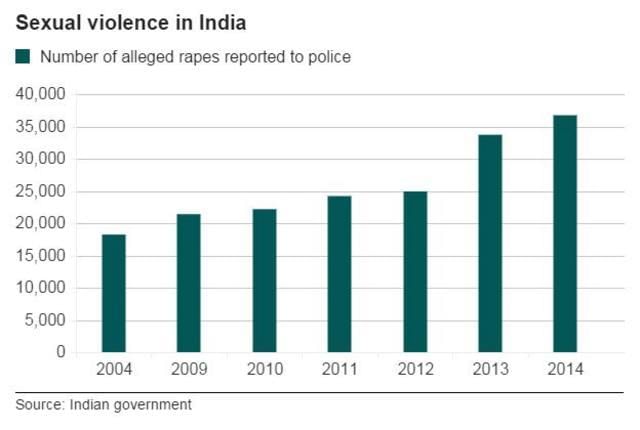 Why in News?
Why in News?
The recent incident of sexual assault and rape of a medical intern at RG Kar Medical Hospital in Kolkata has highlighted the ongoing issues of women's safety and the fight for gender justice in India.
Key Takeaways
- Definition of Rape: Non-consensual sexual penetration of any kind.
- Legal Framework: Defined under Section 375 of the Indian Penal Code, outlining circumstances under which rape is recognized.
- Prevalence: Significant rise in reported rape cases as per the National Crime Records Bureau (NCRB).
Additional Details
- Definition of Rape: Rape includes any non-consensual vaginal, anal, or oral penetration of a sexual nature. The legal definition specifies that consent obtained under coercion or fraud is not valid.
- Statistics: The NCRB reported 31,677 cases of rape in 2021, marking an increase from the previous year, with an average of 90 cases reported daily in 2022.
- Conviction Rates: Between 2018 and 2022, conviction rates for rape cases ranged from 27% to 28%.
- Impact of Rape: Rape is often used as a tool of violence against women, reflecting power dynamics and societal attitudes towards gender.
The societal implications of such incidents underline the need for comprehensive reforms in legal procedures and societal attitudes towards women. It is crucial to strengthen laws and promote gender justice to ensure safety and equality for all individuals.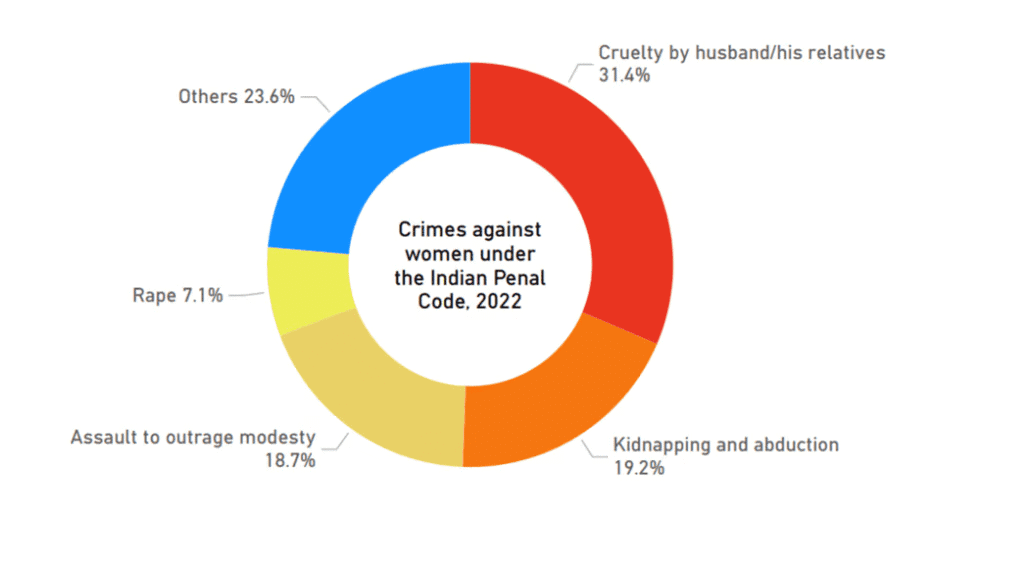
Who are Chenchus?
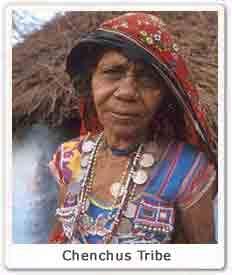 Why in News?
Why in News?
The Chenchus, an indigenous tribe residing in the Nallamala forests of Andhra Pradesh, are facing increasing challenges due to modernization, which has led to reduced job opportunities under the Mahatma Gandhi National Rural Employment Guarantee Act (MGNREGA).
Key Takeaways
- The Chenchus are a Telugu-speaking food-gathering tribe living in the Nallamalai forests, recognized as a Scheduled Tribe in Andhra Pradesh.
- They maintain a conservative lifestyle, largely avoiding modern influences and continuing traditional practices.
- Their primary means of livelihood involves gathering food from the forest, such as roots, fruits, and other natural products.
Additional Details
- Chenchu Villages: Known as Penta, these villages consist of spaced huts grouped by kinship, where a village elder, or Peddamanishi, plays a crucial role in maintaining social order.
- The Chenchus practice a unique form of spirituality, worshipping various deities and integrating some Hindu religious practices. They have a historical association with the Srisailam temple, a significant pilgrimage site in their region.
- Despite their skills in food gathering, many Chenchus struggle economically and rely on selling their forest products to traders and cooperatives.
The Chenchus exemplify a lifestyle deeply connected to their forest environment, facing the challenge of adapting to a rapidly changing world while striving to preserve their cultural identity.
India’s Ageing Population
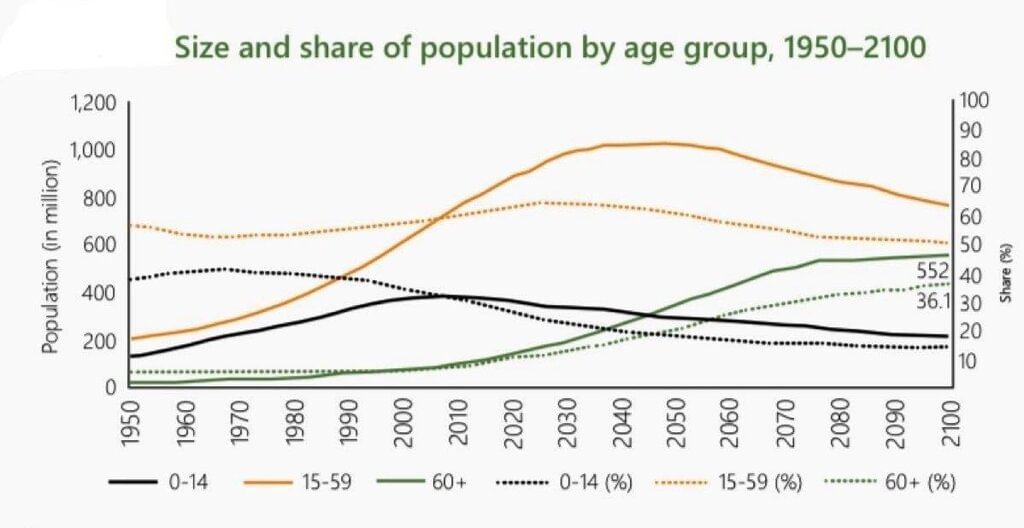 Why in News?
Why in News?
Recently, some politicians from India’s southern states have voiced concerns regarding the ageing and shrinking population, advocating for legislation to incentivize residents to have more children. The ageing population represents a significant demographic trend, characterized by an increasing proportion of individuals aged 65 and older in relation to the working-age population (15-64).
Key Takeaways
- India's population is projected to increase by 31.1 crore (311 million) from 2011 to 2036.
- Nearly half of this growth (17 crore) will occur in five states: Bihar, Uttar Pradesh, Maharashtra, West Bengal, and Madhya Pradesh.
- Uttar Pradesh will contribute 19% of the total population growth, whereas the five southern states will account for only 29 million.
Additional Details
- Ageing Population Trends: The number of individuals aged 60 years and older is expected to more than double from 10 crore (100 million) to 23 crore (230 million), increasing their share of the total population from 8.4% to 14.9%.
- The proportion of individuals aged 60 and older is projected to rise from 13% in 2011 to 23% by 2036, indicating that nearly 1 in 4 individuals will fall into this age group.
- The share of the 60+ population in the southern states is expected to increase from 7% in 2011 to 12% by 2036.
- There is a notable North-South divide, with northern states projected to see a smaller increase in the ageing population compared to southern states.
- For instance, Andhra Pradesh is expected to reach the Replacement Level of Fertility (2.1 children per woman) by 2025, significantly later than states like Kerala, which reached this level in 2004.
As India faces these demographic changes, it is essential to understand the implications and potential solutions to address the challenges posed by an ageing and shrinking population.
What are the Causes of Ageing and Shrinking Population?
- Contraception and Family Planning: Greater access to contraception and abortion services has empowered individuals to control their reproductive choices.
- Women's Economic Participation: Increasing participation of women in the workforce has led many to delay childbirth or opt out of having children for career and financial reasons.
- Improved Child Survival Rates: The under-five mortality rate has significantly declined, resulting in families choosing to have fewer children.
- Urbanization: Rising costs of living in urban areas often deter families from expanding their households.
- Migration: Indian migration to foreign countries, such as the UAE and USA, contributes to the decline in the domestic population.
What Concerns are Associated with the Ageing Population?
- Small Representation in Parliament: Southern states with ageing populations fear reduced political representation in the Lok Sabha.
- Slowing GDP Growth: An ageing population can lead to decreased economic growth due to a shrinking labor force.
- High Dependency Ratio: An increase in the proportion of dependents (both elderly and children) will burden the working-age population.
- Higher Public Expenditure: Costs for healthcare, pensions, and long-term care will rise significantly as the population ages.
- Intergenerational Equity Issues: Younger generations may feel unfairly taxed to support an older population.
- Pressure for Institutional Reform: The ageing population may lead to calls for reforms in retirement age and social security systems.
How do Countries Respond to Ageing Population?
- China’s Three-Child Policy: In 2021, China allowed families to have three children, changing the previous one-child policy.
- Japan's Parental Leave: Japan mandates twelve-month parental leave and provides financial aid to parents.
- Extended Retirement Age: Some countries have extended the retirement age to alleviate pension system pressures.
- Open Immigration Policy: Countries like Australia and Canada have adopted open immigration policies to counter labor shortages.
What can be done to Arrest Ageing and Shrinking Population?
- Pro-Natalist Policies: Scandinavian countries show that family support, childcare, gender equality, and parental leave can help maintain fertility rates.
- Leveraging Internal Migration: Encouraging migration from populous northern states to developed southern states can mitigate the ageing population's impact.
- Promoting Gender Equality: Initiatives that promote shared parenting responsibilities may lead to higher fertility rates.
In conclusion, addressing the challenges posed by an ageing and shrinking population in India requires a multifaceted approach, including policy reforms and initiatives to support family growth and economic stability.
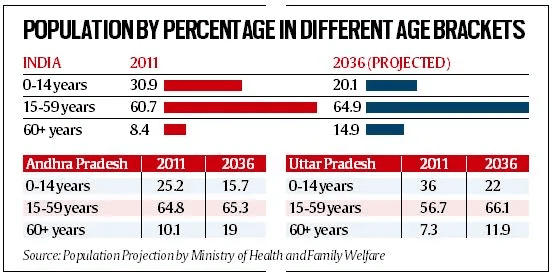
Global Hunger Index (GHI) 2024
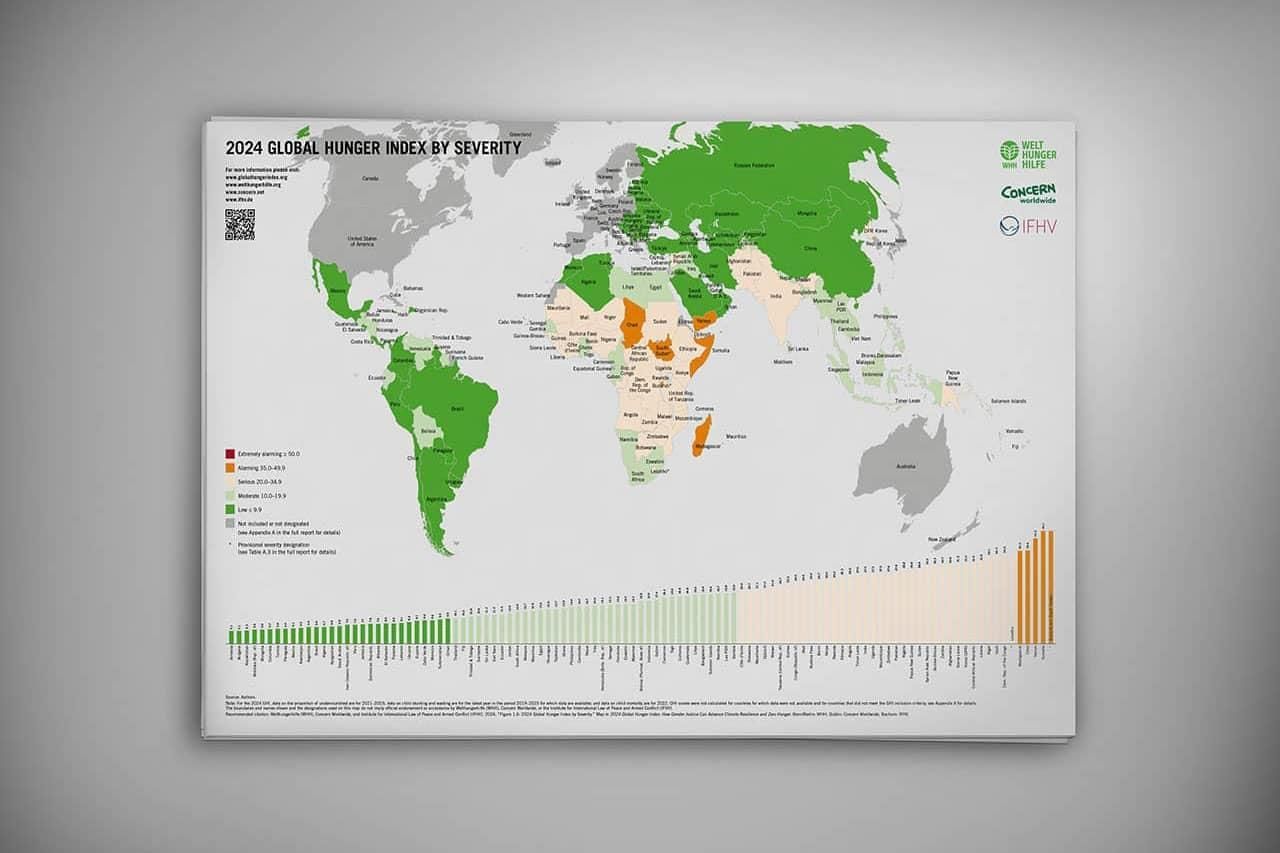 Why in News?
Why in News?
India's ranking in the 2024 Global Hunger Index (GHI) highlights the ongoing challenges it faces regarding hunger and malnutrition, standing at 105th out of 127 countries with a score of 27.3, which falls into the 'serious' range. Despite being one of the fastest-growing economies, India lags behind several South Asian neighbors, emphasizing the urgent need for effective interventions.
Key Takeaways
- India ranks 105th out of 127 countries in the GHI 2024.
- The GHI score for India is 27.3, indicating a serious level of hunger.
- There is a pressing need for coordinated efforts to tackle hunger and malnutrition.
Additional Details
- Global Hunger Index (GHI): The GHI is an annual publication that measures and tracks hunger globally, regionally, and nationally, reflecting multiple dimensions of hunger over time. It was created in 2006 and is now a joint project of Welthungerhilfe and Concern Worldwide.
- 2024 GHI Theme: 'How gender justice can advance climate resilience and zero hunger'.
- Current Global Hunger Statistics: The global GHI score is 18.3, showing slight improvement since 2016. Vulnerable populations include 2.8 billion people who cannot afford a healthy diet.
- Regional Disparities: Sub-Saharan Africa and South Asia face the highest rates of hunger and malnutrition, with ongoing conflicts exacerbating the situation.
- Underlying Causes of Hunger: Climate change, armed conflicts, and economic instability significantly impact food security.
- India Specific Findings: Approximately 35.5% of children under five in India are stunted, and 18.7% are wasted, indicating severe malnutrition issues.
The GHI 2024 serves as a stark reminder of the challenges India faces in eradicating hunger. It emphasizes the importance of comprehensive solutions that address the underlying causes of malnutrition, including enhanced food security, healthcare access, and targeted maternal and child nutrition programs. Initiatives like the National Food Security Act (NFSA) and PM POSHAN Scheme are critical in this fight against hunger.
Understanding MGNREGA and Worker Deletions
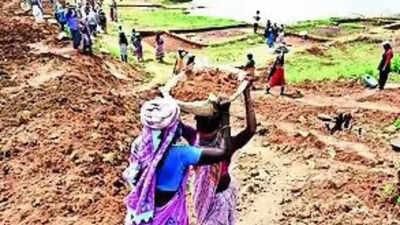 Why in News?
Why in News?
The past few years have witnessed a significant rise in the number of workers being removed from MGNREGA job cards, raising concerns about the impact on rural employment and livelihoods. The Mahatma Gandhi National Rural Employment Guarantee Act (MGNREGA) is a vital component of India's social security framework, guaranteeing 100 days of work annually for every rural household. However, recent trends show a troubling increase in the deletion of workers from job cards.
Key Takeaways
- MGNREGA provides a legal guarantee of work to rural households.
- Job cards are essential for implementing the provisions of MGNREGA.
- The recent spike in worker deletions undermines rural livelihoods.
Additional Details
- MGNREGA Job Cards: These are crucial documents issued to rural households under MGNREGA, ensuring access to employment. They include details about household members eligible for work and record wages earned.
- Unique Identification: Each job card is assigned a unique ID, ensuring that households can be tracked effectively.
- Challenges: There has been a concerning trend of arbitrary deletions linked to the implementation of Aadhaar-based payment systems, often without transparency or proper notice to the affected workers.
- Impact on Livelihoods: The deletion of workers from job cards can lead to loss of income and increased poverty, particularly affecting marginalized communities.
- Restoration Efforts: Recommendations to restore the right to work include strengthening accountability in the deletion process, independent audits of MGNREGA implementation, and raising public awareness about rights under the scheme.
The rising trend of worker deletions from MGNREGA job cards poses a serious threat to the rural employment landscape in India. It is crucial to address these issues to safeguard the entitlements of millions of rural households and ensure that they continue to receive the benefits of this important social security program.
Femicides in 2023: Global Estimates of Intimate Partner/Family Member Femicides Report
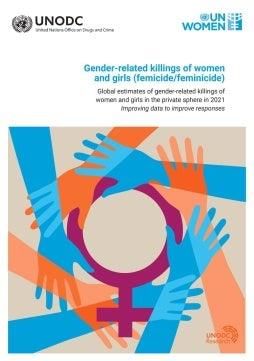 Why in News?
Why in News?
Recently, a significant report was released on the International Day for the Elimination of Violence against Women (25 November) by UN Women and the United Nations Office on Drugs and Crime (UNODC), highlighting the severity of the global crisis of femicide.
Key Takeaways
- In 2023, approximately 85,000 women and girls were intentionally killed globally, with 60% (around 51,100) killed by intimate partners or family members.
- On average, 140 women and girls per day became victims of femicide by intimate partners or close relatives.
Additional Details
- Global Scenario: Africa reported the highest number of victims (21,700) and the highest rate of femicide per population (2.9 per 100,000). The Americas and Oceania followed with rates of 1.6 and 1.5 per 100,000, while Asia and Europe reported significantly lower rates, at 0.8 and 0.6 per 100,000.
- Non-Domestic Femicide: Increasing recognition of non-domestic femicides includes cases from France (5% from 2019–2022) and South Africa (9% from 2020–2021).
- Male as Homicide Victims: An estimated 80% of all homicide victims in 2023 were men, while 20% were women. However, lethal violence disproportionately affects women, with nearly 60% of women intentionally killed being victims of intimate partner or family member homicide.
- Data availability has declined, with only half as many countries reporting in 2023 compared to 2020.
The report underscores the urgent need for a multifaceted approach to combat gender-based violence, emphasizing the importance of addressing its root causes, strengthening legal frameworks, increasing public awareness, and improving data collection.
Forms of Violence Against Women
- Domestic Violence: Actions by current or former partners or family members causing physical, sexual, or emotional harm, including physical aggression and psychological abuse.
- Sexual Violence: Unwanted sexual acts imposed without consent, targeting women and girls disproportionately, including rape and sexual harassment. In India, over 31,000 rape cases were reported in 2022, averaging 87 cases daily.
- Psychological Abuse: Intimidation through gestures or words, humiliation, and derogatory comments, as well as practices like isolating menstruating women and female infanticide.
- Cultural Abuse: Harmful social practices such as female genital mutilation, witch-branding, and child marriage.
- Technology-Facilitated Violence: Online harassment, stalking, and defamation, including distribution of morphed images and doxing.
Key Facts Regarding Gender Violence in India
- Increase in Crimes Against Women: According to the National Crime Records Bureau (NCRB) 2022 data, crimes against women rose 4% in 2022 compared to the previous year.
- Nature of Crimes Against Women: The majority of such crimes in 2022 were reported as follows:
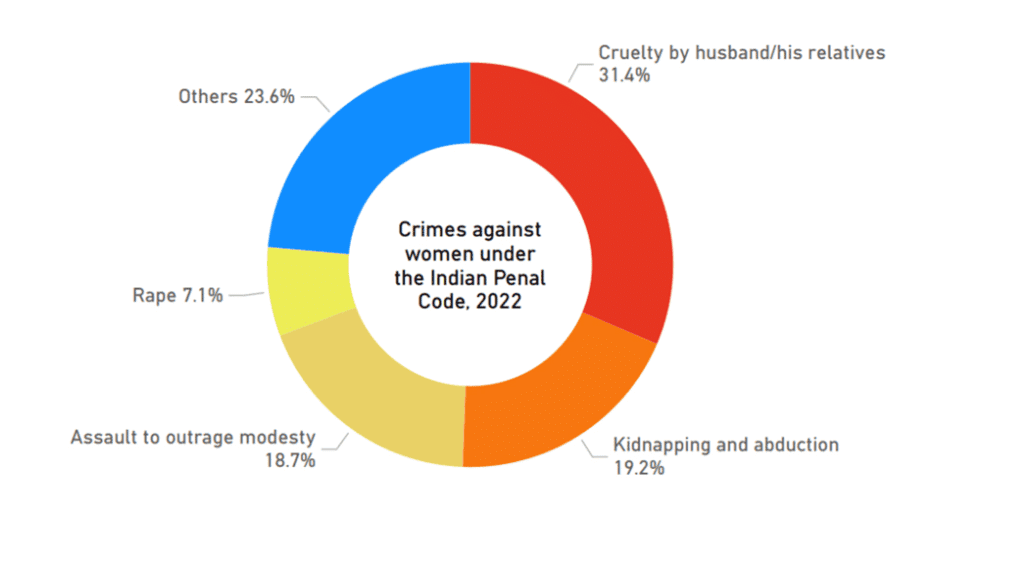
- Over 4.45 lakh cases of crimes against women were registered in 2022, equivalent to nearly 51 FIRs every hour.
- High Rape Cases: More than 31,000 rapes were reported in 2022, with a peak of nearly 39,000 in 2016.
Preventing Femicide
- Addressing Root Causes: Focus on individual attitudes and interpersonal relationships, while strengthening community and societal support systems.
- Educational Initiatives: Promote gender equality and relationship skills through educational curricula.
- Legal Measures: Classify femicide as a distinct criminal offense and establish specialized units for handling gender-based violence.
- Risk Reduction: Train police to identify high-risk situations and enforce protective measures for victims.
- Awareness Movements: Campaigns like #MeToo and Ni Una Menos aim to raise public awareness about gender-based violence.
In conclusion, the report calls for comprehensive action at multiple levels to effectively combat femicide and protect women's rights, emphasizing the importance of collaboration among individuals, communities, and institutions.
|
38 videos|5264 docs|1112 tests
|
FAQs on Indian Society & Social Justice - 2 - Current Affairs & Hindu Analysis: Daily, Weekly & Monthly - UPSC
| 1. What recent measures has the Supreme Court of India taken to strengthen laws against child pornography? |  |
| 2. What are the key factors contributing to the rise of sexual assaults in India? |  |
| 3. Who are the Chenchus, and what is their significance in India? |  |
| 4. How is India's ageing population expected to impact the economy and society? |  |
| 5. What are the main challenges faced by the Mahatma Gandhi National Rural Employment Guarantee Act (MGNREGA) in terms of worker deletions? |  |
















